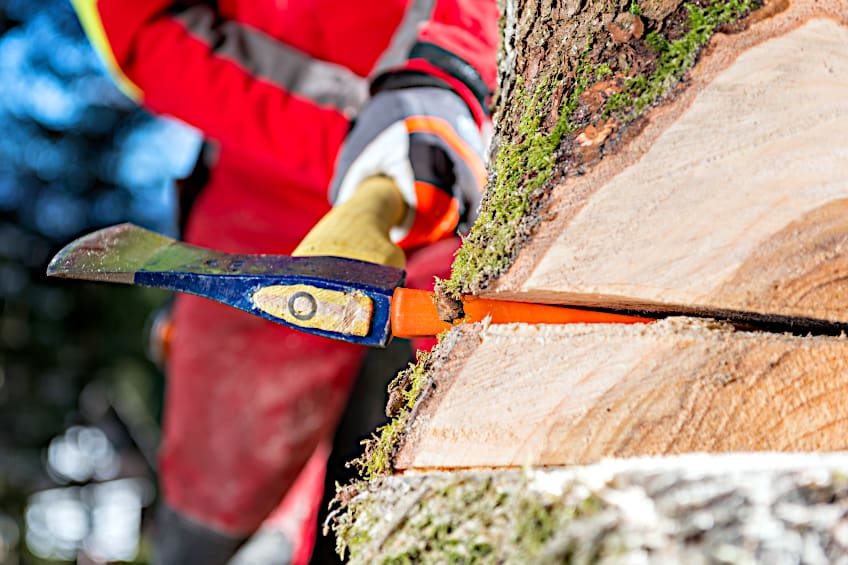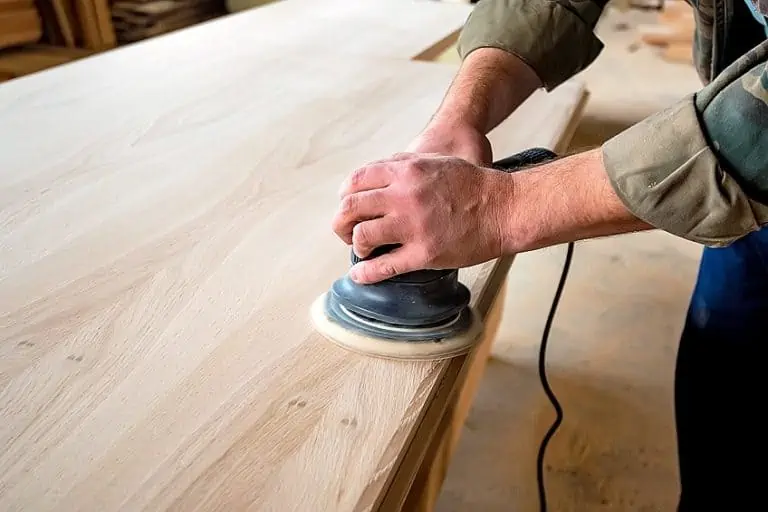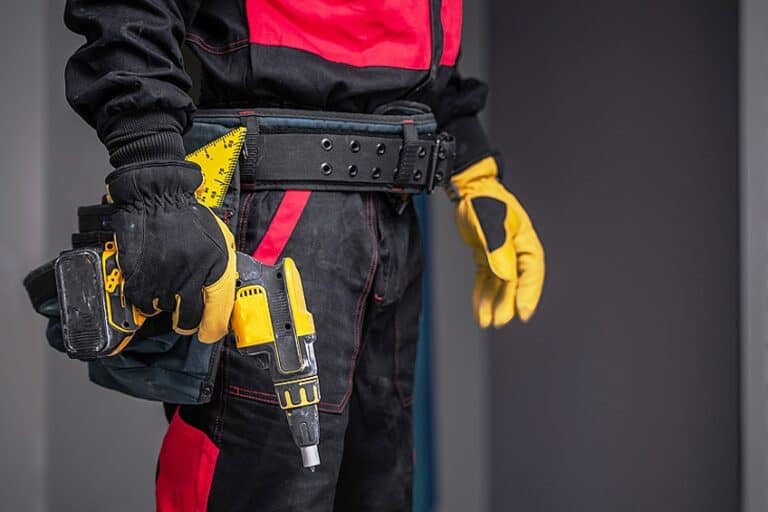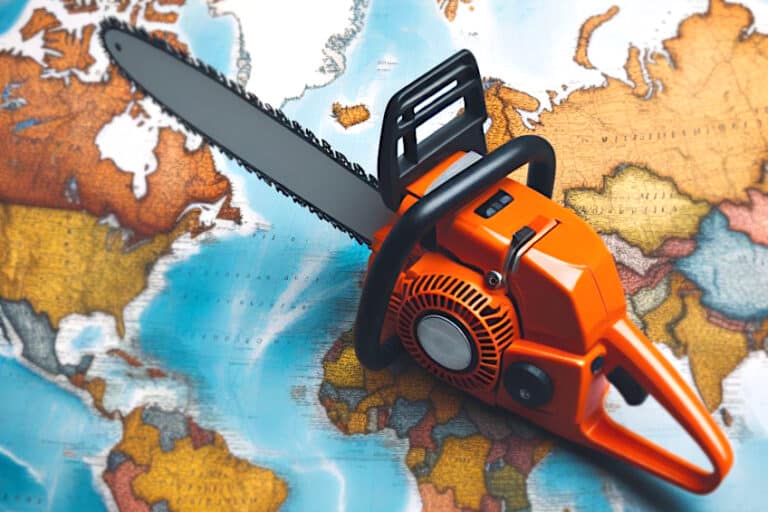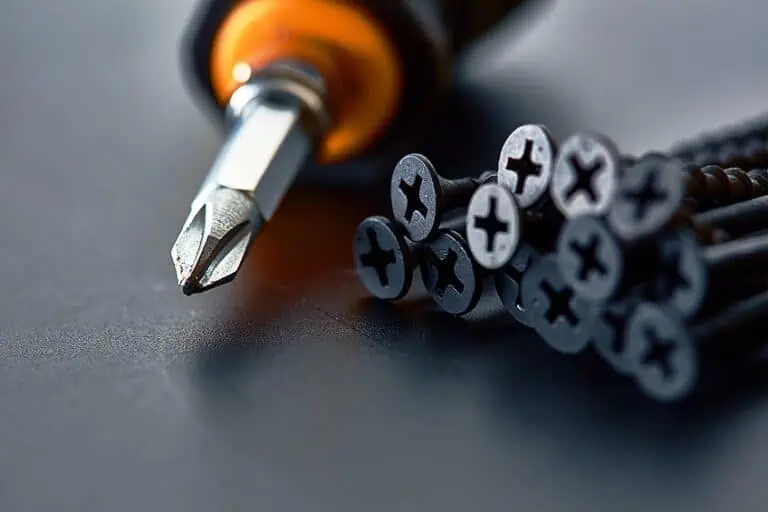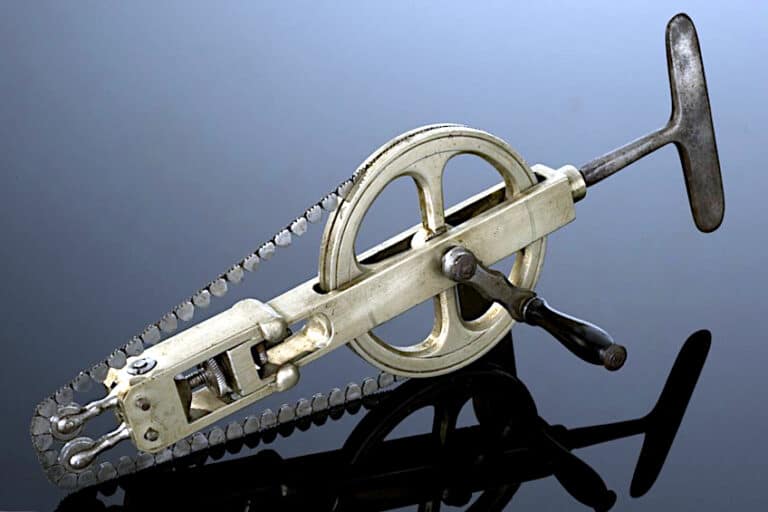How to Cut Wood Without a Saw – Alternative Cutting Tools
If you are an avid wood crafter, then the chances are that one of the first tools you ever purchased was a wood saw. After all, this is an indispensable part of any crafter’s toolkit, but what would happen if your coveted wood saw just upped and disappeared? Well, you’ll be pleased to know that even without a saw, there are many ways that you can go about cutting wood. As unbelievable as it sounds, we’ve found a few creative ways for you to work around using a saw to cut through wood, so let’s have a look at how to cut wood without a saw, what tools are best suited for the job, and, of course, how to use them!
Why Would You Ever Try Cutting Wood Without a Saw?
It might seem like a silly scenario to think about, after all, we just said that the wood saw is an indispensable part of any wood crafter’s toolbox. However, if you’ve been doing woodwork for a while then you know that pretty much anything is possible and in a best–case scenario, your wood saw has simply gone missing, or someone borrowed it without bothering to tell you. However, there are other things to consider. If you’ve been busy for a while and forgot to sharpen and/or replace your saw’s blades, it might render it unusable in your time of need. Another scenario to consider is an inexperienced individual using your saw for the wrong application and ruining your blade, with no replacement nearby.
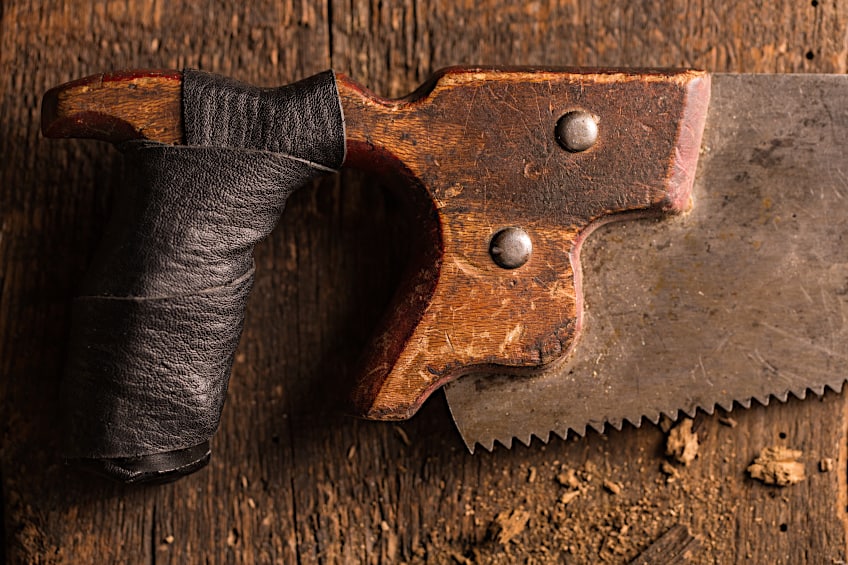
In an absolute worst-case scenario, your saw could be damaged or bent, leaving you frustrated and desperate to get the job done. A classic is assuming that your blade was capable of cutting through something other than wood, only to discover that its teeth are now worn or completely sheared off after use.
These are all nightmare scenarios, especially if you’re out in the wild with no means of replacement or repair nearby. However, saws are a relatively new tool, and our ancestors (and fellow crafters in modern times) had surprisingly effective means of cutting through wood without the use of toothed saw blades. In fact, the oldest hand saws that have ever been discovered date back to the fourth century CE, which means that the saw has only been around for a few hundred years at most. That being said, let’s have a look at some of the alternative ways you can cut through wood if you ever find yourself without a saw.
How to Cut Through Wood Without a Saw
What exactly do you do when you can’t find a saw to cut your wooden workpiece? Well, there are a few options to consider based on the things you have available, as well as what type of wood you’re dealing with. Let’s have a look at some of the tools you can use to cut wood should you find yourself without a saw and how to use them.
Use a Wood Axe
The wood axe is an easy tool to overlook when choosing anything other than a saw to cut wood with. The chances are that if you engage in wood crafting frequently, you probably have one of these bad boys laying around. So, how do you use an axe to cut wood if your saw isn’t around? After all, axes need to be hacked into wood, and you don’t want to damage your workpiece, do you?
If you’re concerned about damaging your workpiece simply use a lighter axe and ensure that your axe has been properly sharpened before attempting to use it. If you aren’t looking for a precise cut on your workpiece an axe is a great way to get a clean, accurate cut on logs and firewood. However, if you’re cutting particularly large logs, we highly recommend you use a log splitter instead.
Wondering how to use an axe to cut wood? It’s pretty easy. Grip the axe’s handle near the bottom of the handle with your dominant hand and use your other hand to grip near the head of the axe. Your grip should be firm but not too tight. When swinging the axe, slide your hand at the head of the axe down toward your dominant one to achieve the force needed to cut into the wood.
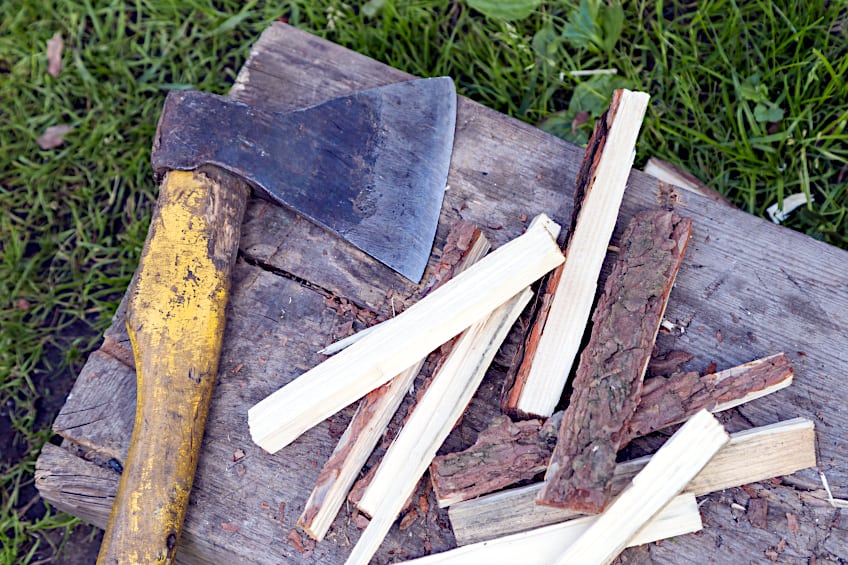
An axe is a great tool for cutting wood and felling trees. However, there are a few notable advantages and disadvantages to using an axe that you should look at before making your choice. A few notable disadvantages are that it lacks the accuracy and precision of a saw, not to mention that it poses significantly more risk to you and those around you if handled incorrectly.
- Easy to use
- inexpensive
- Does not need to be maintained very often
- Can be used on most wood species
- Can cut wood faster depending on the species and application
- Not as accurate as a saw
- Inherently carries a greater risk of potential injury
- Axes “hack” into the wood, they do not “saw” through
- Might not be suited for delicate workpieces
- Can be heavy and labor-intensive to use
Use a Knife or Machete
Never underestimate the effectiveness of the knife and machete combination! These two make an awesome team when it comes to cutting wood and/or felling small trees. The size of the workpiece you need to cut will determine the size of the machete-knife combination you’ll be using. Why do they work so well as a team? Machetes make deep, quick cuts, while knives make slow, shallow ones in comparison.
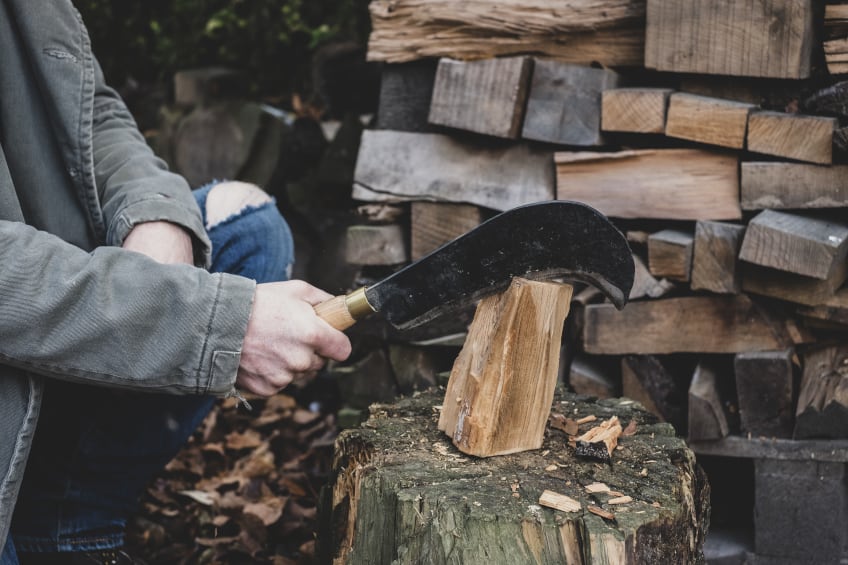
They compensate for one another in more ways than one. How do you use this combination to cut wood? Make a deep, sweeping cut with your machete to start things off. When wielding a machete, we recommend using both hands (no matter how many movies tell you otherwise), raising the tool, and striking downward until making contact with your intended location.
As we mentioned previously, you’ll use your knife to tidy up the cut you’ve made with your machete. That being said, it doesn’t mean you should cut too wildly with your machete as it could mean a lot more work tweaking the cut with your knife. Carve out the edges of your cut using your knife, and if your blade is serrated, you might even be able to use it as a miniature saw!
This method may seem a bit crude but if you desperately need to cut some wood this method will more than suffice. If you have a machete on hand, be sure that it’s graded for chopping wood and lighter work like chopping through vines. Using the incorrect type of machete could result in damage to your workpiece as well as your blade.
- Easy to use
- Tools are readily available
- Machetes are lighter to swing compared to axes
- Knives clean up cuts quite nicely
- Machete’s cut deeply and quickly
- Machete’s hack, making them inaccurate.
- The potential for injury is far higher compared to using an axe
- Typically requires more swings to cut wood compared to an axe or saw
- Can take considerably longer when cutting dense wood or felling trees
- Knives generally need to be serrated to clean up cuts
Use a Chisel and Mallet
If you aren’t looking for a precision cut, then this might be exactly what you’re looking for. Chisels are usually used to shape wood and create grooves or joints, but they can also be used to cut wood or break off ends. There are many types of chisels to choose from, which is a good thing considering that some wood types won’t respond to lighter, shaping chisels. Softter hardwood species like pine will respond pretty well to being cut with a regular chisel, but denser hardwood species like walnut or oak will be easier to cut using a heavier chisel. Wondering how to use a chisel to cut wood? All that you need to do is place your chisel in contact with the surface of the wood at your desired angle, hold it firmly, and strike it with your mallet.
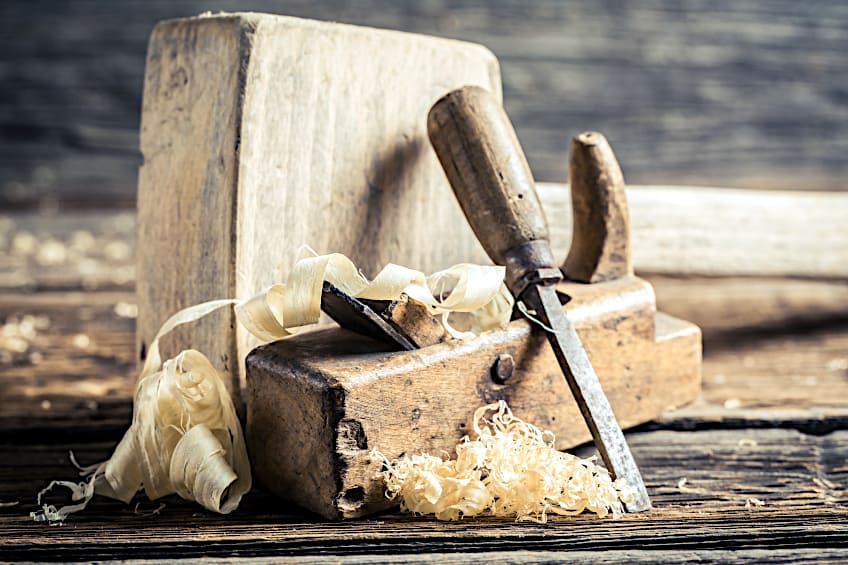
Lighter wood species are more malleable and therefore will be easier to cut through using a chisel, but denser woods will likely take a bit longer. Cutting wood using a chisel is both labor-intensive and time-consuming, so you’ll need to exercise quite a bit of patience and use some elbow grease to get the job done.
If you’re considering using this method to cut your wood, you should make sure that both your chisels and mallet are in good working order. Ensure that your chisels are sufficiently sharpened and that the handle and head of your mallet are firmly secured. If you’re having trouble making headway with a single mallet, we recommend starting off with a heavier one and switching to a lighter one once the surface of the wood has been penetrated.
- Easy to use
- Can be used to shape and cut wood
- Usually safer compared to using a machete or axe
- Gives you more control over the depth of your cut
- Chisels can be changed to suit the wood you’re cutting
- Chisels need to be sharp to cut accurately
- A decently weighted mallet is needed for deeper cuts
- Some chisels cannot be used to cut wood
- Repeatedly striking the chisel can be labor-intensive and time-consuming
- Offers more control than using an axe but less than using a saw
Using a Wire Saw/Cable Saw
Many rural survival kits these days are sold with a wire saw as standard. If you’re not sure what a wire saw is, it’s essentially a piece of thin metal wire that can be moved back and forth along the surface of your workpiece until it cuts into the wood fibers. Usually, if you’re cutting a log, you’d wrap the wire around the long and grab the handle on each end of the tool.
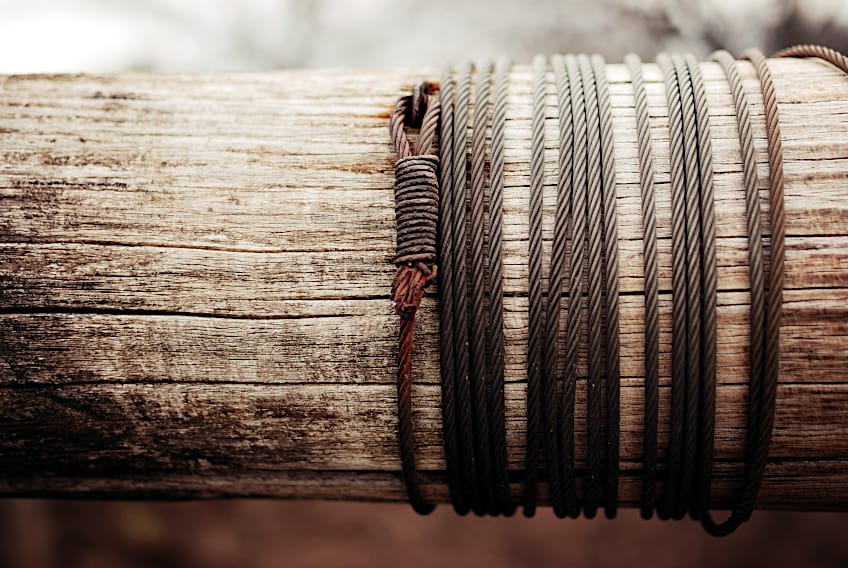
It’s sort of like you’re hugging the log with the wire. Next, move the wire back and forth by pulling each end of the wire back and forth. You’ll feel the wire begin to eat into the wood’s fibers thanks to the friction, and all you need to do is repeat this process until you’re all the way through your workpiece. Wire saws are usually pretty clean, and the closest you can get to that of a blade.
Keep in mind that wire saws can be really challenging to use, especially if you’ve never used one before. The pulling motion can be labor-intensive and time-consuming, but if you’re stuck in the wild or simply find yourself without a saw, this is arguably one of the best tools to have. If you’re unsure about which type of wire saw to choose, there is a rule you should keep in mind.
The thinner the wire, the faster it will cut. However, thinner wires tend to break more easily than thicker ones, and might not be suited for denser wood species like oak and walnut. Wire saws also pose a potential danger to you while being used. Due to the tension they’re under while in use, should the wire snap, it could result in deep lacerations to your hands, arms, eyes, chest, and legs. That being said, always wear the appropriate personal protective gear when working with these.
- Functions in the same manner as a saw
- Readily available
- Can be used to cut both dense and sparsely-grained wood species
- Does not require a swinging action to operate
- Can be used to cut small and large wooden objects
- Creates smooth, relatively clean cuts
- Extremely time-consuming to use
- Labor intensive and repetitive to operate
- Can take some practice to use it effectively
- Can be challenging to keep your cut straight
- Thinner wire saws tend to break when used excessively
Use Fire or Hot Coals
While this might seem like bad advice, it’s actually one of the most effective ways to cut wood without a saw. After all, wood is highly susceptible to fire and therefore tends to disintegrate when exposed to open flames and embers. While we wouldn’t recommend trying to use an open flame to cut wood, you can use hot coals.

How do you use hot coals to cut wood? Well, carefully. Using a pair of tongs, grab hold of a relatively hot piece of coal and rub it across the piece of wood you’d like to cut. You should see the wood start to smoke and darken where the coal has made contact with it. This is a good thing, so just keep rubbing the wood with the coal, making sure to stop if it catches on fire.
After a while, the wood should become brittle enough for you to break it off by hand or simply keep going until you have rubbed through completely. As you can imagine, this isn’t a feasible method to use and particularly for large, thick, or dense workpieces. However, if you have a plank or two that you can’t seem to break by hand this is a good way to soften them up.
Since the section of wood you’ve been rubbing will be charred, we recommend filing and/or sanding down that section once you’re happy with the size of the board. All of that being said, this should be an absolute last resort should you find yourself without a saw and/or any of the other tools we’ve mentioned above. Why? The last thing you’d want is your workpiece catching on fire and the fire spreading in your workspace.
- Effective in emergency
- Requires no cutting tools
- Fairly easy to use
- Doesn’t require much physical effort
- Utilizes heat instead of friction
- Doesn’t produce wood dust
- Potential to burn your hands
- Could result in your workpiece being set on fire
- Does not allow for a precise cut
- Cannot be used on all wood species
- Needs to be done outdoors due to the smoke produced by coal
Safety Tips for Cutting Wood Without a Saw
Now that you know how to cut wood without a saw, we thought we’d cover some of the safety precautions you should take when using some of these methods. Most of these saw alternatives involve you hacking away at wood with quite a bit of force, so appropriate precautions should be taken to ensure your safety and the safety of those around you.
Safety Precautions When Using an Axe
While we detailed how to get the most effective swing out of an axe there are some safety precautions you should follow when making use of one. The first would be to ensure that you have the right distance between yourself and your intended target. How do you do this? Hold the axe at its head and hold it up in a swinging position. Bring the handle down slowly until the handle touches the bottom end of your mark. Once you’ve established your distance, be sure to inspect the blade of your axe to ensure that it’s sharp enough to penetrate the surface of your wood board. If your blade is blunt, it could skip off the surface of your wood and hit surrounding objects or yourself.
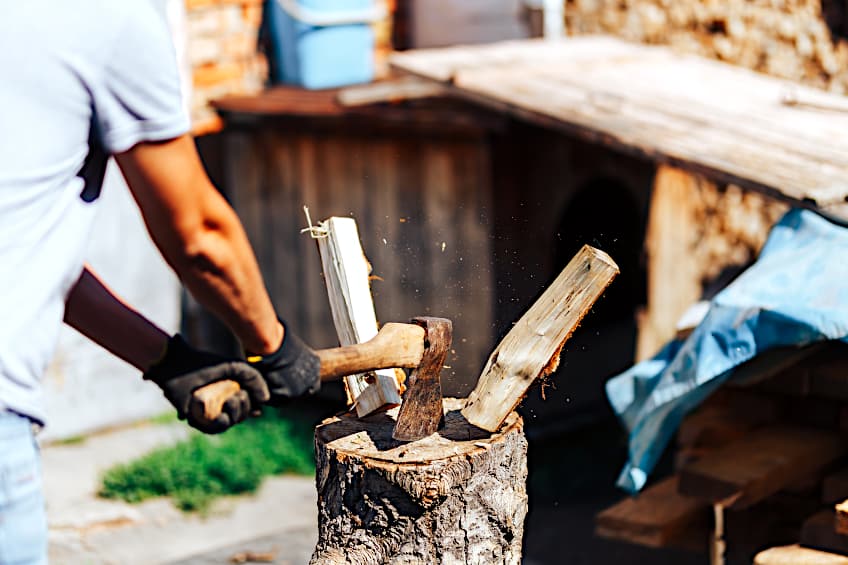
Additionally, you should never use an axe to cut anything other than wood. Can an axe cut things like metal and plastic? Maybe, it depends on the type of material and how it’s been conditioned, but it’s pretty risky. After all, axes are meant to chop and cut wood, not saw through other materials. Attempting to use an axe to cut other materials could damage your axe, the object, or yourself.
You should also never use the pole and/or blunt end of the axe head as a hammer. Not only can this severely damage your axe, but it could result in your axe head dislodging from the handle and flying off. It should go without saying that this is bad and could damage your workpiece, break your axe, and cause serious damage to your immediate environment (not to mention anyone around you!).
Finally, you should avoid getting your axe wet, or at the very least ensure that it’s dried thoroughly should it ever become wet. Why? High-quality axes are made of ferrous metals, essentially metals that have high iron content. This means that they can rust really easily and end up losing their cutting-edge.
Safety Precautions When Using a Machete and Knife
Machetes are awesome tools for cutting into wood and slicing through vines. However, things can go wrong pretty quickly, so you should ensure that you are protected and that your blade is in good working order. When it comes to protecting yourself, you should ensure that you are wearing gloves, eye protection, a set of work boots, and a face mask.
When it comes to maintaining your machete, you should ensure that your blade is as sharp as possible. How do you sharpen your machete? Machetes can be sharpened with a conventional knife sharpener and should be done as often as needed depending on how frequently you use your machete.
Once you’re sure your blade is sharp, you should also ensure that your blade is properly oiled. Machete blades need to be oiled regularly in order to avoid oxidation build-up on the surface of the blade. Blade oil can be purchased at most hardware and hobby stores, and if they’re out of stock, it can be purchased online too!

Knives are maintained much in the same way. Whether they’re serrated or not, your knife should always be sharpened to ensure that it cuts correctly and with minimal effort. You can store your blade manually or by using a modern knife sharpening tool. Just like the machete, some knives also need to be oiled to stave off oxidization.
Safety Precautions When Using a Chisel and Mallet
Chisels are fairly rudimentary tools that have been used for hundreds of years in various industries, and they’re really useful if you need to chop up some wood without the use of a saw. They, like any hand tools, can be dangerous if misused though. How can such a simple tool be dangerous though? Put simply, chisels are edge tools, and like any tool with a blade or edge, accidents can occur easily.
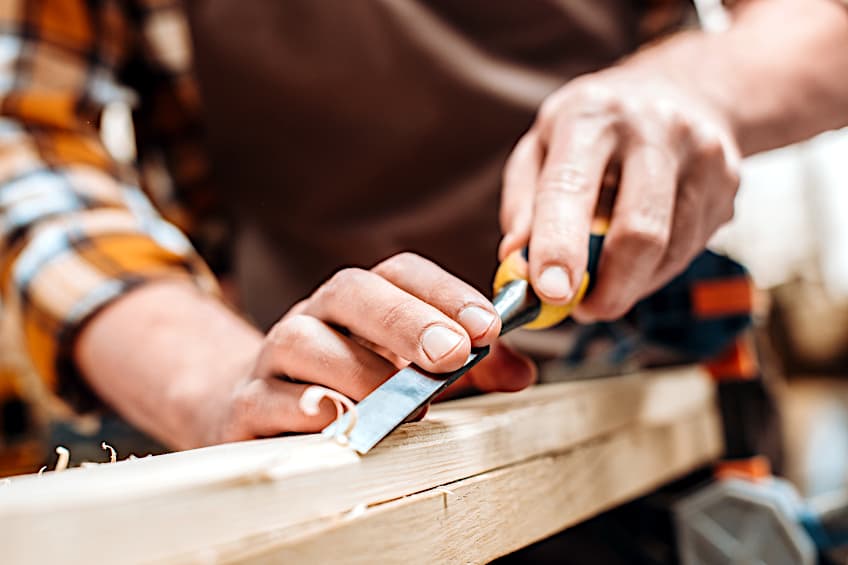
How can you handle a chisel carefully though? First off, you should only ever chip away from yourself. Why? The chisel could accidentally slip and cut into you, which would be uncomfortable, to say the least. You should also inspect your chisel to ensure that there aren’t any hairline cracks in it or missing pieces, as striking a damaged chisel could cause it to shatter and splinter outward.
You should also ensure that your hammer is in good working order. Just like when swinging an axe, you should ensure that the head of your hammer/mallet is firmly attached to the handle. As you can imagine, swinging a hammer that is not securely intact can result in the head of your hammer flying off on impact or when it’s being raised.
Finally, you should ensure that your hammer and chisel are as dry as possible before placing the chisel in contact with your workpiece and before attempting to strike it with your mallet. Why? A huge part of the operation of successfully using a hammer and chisel is firmly gripping each tool, and failing to do so could result in an inaccurate cut and/or serious injury.
Safety Precautions When Using a Cable Saw
One of the best solutions to cutting wood without a saw is using a cable saw. After all, these are included in virtually every modern wilderness survival kit, and for good reason. They’re compact, easy to use, and can be whipped out pretty much anywhere. However, these can be pretty dangerous if handled incorrectly.
If you aren’t in the wild and you’re cutting some wood in your workspace at home, it’s best to keep the path of the cable saw clear. Clear of what? Anything. Ensure that you are wearing gloves and that your fingers are clear of the cutting path, in addition to any electrical wires or cables that could potentially be cut by your saw.
Next, ensure that you never take your eyes off the area that you’re cutting, and ensure that you apply even pressure to each end of the saw when pushing and pulling. You should also ensure that the type of cable saw you’re using is graded for use with wood and not other materials like PVC plastics. You should ensure that you have the right cable saw for the type of wood you’re using. While denser wood species are best cut with a thicker cable saw, they can be slower. However, thinner table saws can snap if they’re used to cut particularly dense wood. That being said, be sure that you use a cable thickness that is appropriate for the density of your workpiece.
Safety Precautions When Using Hot Coals
When cutting wood without a saw, this probably isn’t the first thing that pops into mind. However, if you reach this level of desperation, you should practice some basic fire safety to ensure that both you and your workpiece don’t accidentally catch fire. How do you practice safety when you’re handling live coals you ask?
Well, you should probably consider wearing some gloves, eye protection, safety boots, and overalls in case the coal accidentally falls, you should also use some well-insulated tongs when handling the coal to ensure the handles do not heat up while you’re holding them. Finally, ensure that you have a fire suppression device like an extinguisher, blanket, and some water nearby in the event that you or your workpiece catch fire.
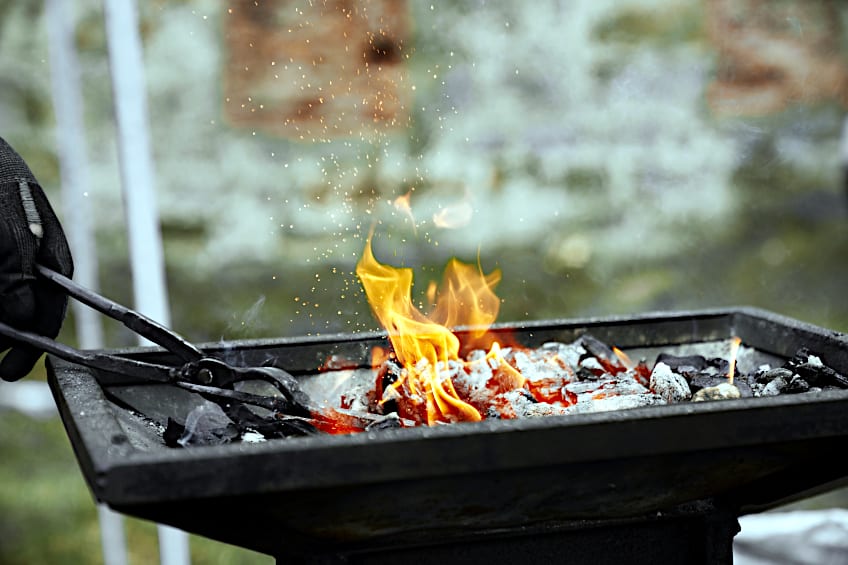
Now that you know how to cut wood without a saw, what tools to use, the safety precautions to take when using them, and some of the pros and cons associated with each tool, it’s time for you to get out there and put your newfound knowledge to the test! Remember to always wear the appropriate personal protective gear when working with hand tools, and to always be aware of what you’re doing when handling them.
Frequently Asked Questions
Can You Cut Wood Without a Saw?
Yes, there are many options for when you need to cut wood but don’t have a saw available. You can use a cable saw, a chisel, an axe, and even a machete! These tools should be more than adequate when cutting most wood boards.
Can You Use a Chisel to Cut Wood?
Yes, you can definitely cut wood using a chisel. Chisels can be used to both cut and shape wood depending on the type of wood and the type of chisel you’re working with. If you are attempting to cut wood using a chisel, you should know that it can be both labor-intensive and time-consuming.
Is It a Good Idea to Cut Wood Without a Saw?
Cutting wood without a saw can be challenging and time-consuming. How effective the exercise is will depend on the type of wood you’re working with, what saw alternative you’ve selected, and how skilled you are using your tool of choice.

I have been into woodworking since 2005 and woodturning since 2011. Because of my love for wood and woodworking, I started woodhappen.com to teach other enthusiasts about how to finish and seal wood, the best woodworking tools, the different types of wood, and everything else related to woodworking! Read more about me here.

